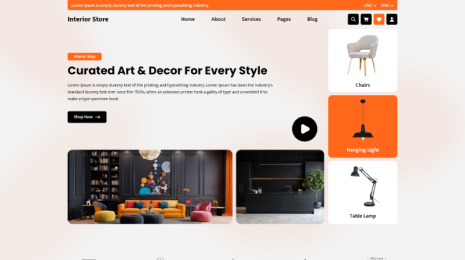
Introduction:
Whether you sell mostly on sponsored product ads Amazon or Google Shopping, you've undoubtedly asked yourself, "Is this the right channel for my business?" Which is better, Google Shopping or Amazon Product Ads? No one size fits everyone. Every platform has advantages and disadvantages. Let's examine each form of advertising to see which is most effective for your goods!
Google Shopping Sponsored Product Ads:

When consumers search for products on Google, they often encounter Shopping ads. These ads stand out with product images, titles, prices, and store names, providing a visually appealing way to showcase products. Google displays Shopping ads in various formats across its platforms, including search results (both desktop and mobile), image search, and YouTube. Their prominent placement, designed to highlight products effectively, makes them a valuable tool for businesses looking to reach potential customers.
If you willing to setup Woocommerce Google Shopping then, you can just go through our previous tutorial. It has a step-by-step guide.
Amazon Sponsored Product Ads:

Unlike Google, Amazon is a product-centric marketplace designed for shopping. This focus allows Amazon to optimize search results for transactional intent, directly connecting consumers with relevant products. Sponsored Products are a key component of Amazon's advertising ecosystem. These ads appear prominently at the top and side of search results, as well as on product detail pages. Similar to Google Shopping ads, they operate on a pay-per-click model, where advertisers bid on keywords to gain visibility. This format makes Sponsored Products a powerful tool for increasing product discoverability and driving sales on Amazon.
Learn how to create an amazon affiliate store in WordPress in our previous tutorial. It gives a complete step-by-step guide.
Benefits of Advertising with Google Shopping:
1. No Commission
The absence of commission is a significant benefit over sponsored product ads for Amazon advertisements. While advertisers must pay for each click on both platforms, Google doesn't charge a fee on sales generated by its advertisements, in contrast to Amazon. You have to keep the excess margin!
2. More transparency than Amazon.
Additionally, sponsored ads for Google Shopping is far more accessible than Amazon. Google has a tendency to be far more transparent about changes to their platforms and has increased the amount of information available through their blog and documentation. It is therefore simpler to create a plan that suits your needs and to anticipate how improvements will affect your advertising.
3. Extensions of Promotion
You can give customers an additional reason to buy through the use of Google Shopping's marketing extensions. Discounts, free merchandise, and free shipping are examples of promotions. Take a peek at our advice on Google Shopping savings!
4. Utilise Your Own Website to Sell Products.
Ultimately, when you place advertisements on Google Shopping, you sell goods on your own website. When you aren't mindful, Amazon may cannibalise the sales from your website this is not a problem with Google Shopping!
Disadvantages of Advertising with Google Shopping:
1. Increased Competition
Yes, there are disadvantages to sponsored product ads for Google Shopping. One is the heightened competitive advantage on the website, where there are actually many more marketers than there are on Amazon. Because of this, it may be extremely challenging to distinguish, especially between smaller retailers.
2. Overly Customisable
Although Google Shopping offers a great level of customisation, campaign management can become cumbersome. After fine-tuning your product stream and fixing any residual issues, you need to create a sensible, profitable campaign strategy. Following that, you must control bids to avoid going over budget and ensure that everything is updated on a regular basis.
3. Temperamental Targeting
Targeting for sponsored product ads for Google Shopping campaigns might be erratic. Google Shopping campaigns cannot target certain keywords directly; therefore, you must make sure that the items you sell don't squander ad money on unnecessary keyword searches.
Benefits of Advertising on Amazon:
1. Cheaper Clicks, Fewer Advertisers
Similar to sponsored product ads for Google, Amazon has advantages. Because there are fewer marketers on this platform, you could be able to enter the market before your rivals. Depending on the goods you sell, Amazon clicks may even be less expensive than those on Google Shopping (despite the fact that keep in mind that royalty is an added expense; more on that later!).
2. Placement Options:
There are certain special placement options available because Amazon ads are conducted on the same system as product sales. In addition to search results, your advertisements might show up on the product detail sites of rival companies. This is definitely a very big benefit. You have the capacity to present your products to people who are currently looking at your competitors' offerings, in addition to those who are searching for products similar to yours.
3. Delivery and Brand Recognition:
Additionally, sponsored product ads for Amazon facilitates purchases worth billions of dollars annually. Because of their strong brand equity and 2-day service, Amazon is frequently chosen by customers. When you already have products listed on Amazon, placing advertisements is an excellent way to get customers to see your store outside of Google Shopping.
4. Keyword Targeting:
Targeting specific words and search queries can be done with Amazon's sponsored product campaigns. This means that you can position your goods at the very top of searches for highly relevant products. On the other hand, Google Shopping commercials only provide indirect keyword targeting through the use of negative keywords; they cannot facilitate direct keyword targeting.
Disadvantages of Amazon Advertising:
1. Commission
From a profit-driven standpoint, this is one of the largest differences between Google and Amazon. Every sale on Amazon is subject to a commission, which is typically 15%. This has the possibility to significantly decrease profit, especially when other expenses are similar to Google Shopping!
2. Less Transparency
Because Amazon's marketplace lacks the open nature of Google Shopping, changes can frequently catch advertisers by surprise. Due to its unpredictability, retailers of all sizes are leaving the site. Additionally, due to a shortage of records, strategies can often be developed through experimentation and failure.
3. Time-consuming
It's also a clumsier platform. Amazon lacks a bulk editor, so you're required to create each campaign from scratch while adding products and setting bids. Google offers this feature. It takes a lot of time if you have several products!
The absence of a bulk operator on Amazon also pertains to edits. Although it's technically possible to alter offers with an entire template, doing so is difficult and prone to error. It takes a lot of time and effort to change everything in the user interface manually! But utilising the API is almost technical, so most advertisers likely won't find it useful.
4. Restricted Alternatives for Management
When it comes to management tools, Amazon is less extensive than Google Shopping. The query division method we use for Google Shopping fails to work for Amazon, and the feed cannot be used to specify traits like it does for Google. The fact that Amazon ads primarily rely on capturing "the buy box," which combines a variety of criteria like cost and FBA eligibility, only serves to mix things up further.
Is Profit the Only Focus?
The nicest aspect is that you aren't actually forced to make a decision. Running sponsored product ads for Google Shopping and Amazon Product ads together with seeing leads for every campaign is totally doable!
Using a profit-driven management approach for both is actually crucial. You must create more successful ads and track expenses at the SKU level if you want to achieve that.
1. Monitor Expenses at the SKU Level
The easiest place to sponsored product ads for Google Shopping advertisements is in the product feed. For this information, Google has only started to make a dedicated product distinctive, although you can alternatively use one of the customised labels.
This is a little more difficult on Amazon. You still need to be aware of the prices connected with each product, even though you can't always include the pricing of the goods in the feed the way you do with Google. In the next part, we'll discuss how to use this information.
In any scenario, be careful to account for any other pertinent expenses as well, such as those associated with shipping, royalty payments, or payment processing. Any commission that Amazon levies on your merchandise, along with any other costs, should be included in your Amazon marketing. For example, items delivered by the seller typically have fees considerably less than those paid by the FBA programme.
The idea is to gather as much data as you can regarding how sales affect your company so that you are able to decide where to allocate your funds for advertising.
2. Construct Robust Campaigns
Your campaign structure will determine how well your sponsored product ads for Google Shopping and Amazon ads perform. While the tactics for each platform vary slightly, there are a few fundamental elements that apply to all of them.
Product segmentation is the first. Products with comparable margins can be grouped together to guarantee that the amount of money allocated to those advertising categories impacts your profit about equally. You need to segment even more tightly on Amazon because we support having very few products per ad group in some circumstances, even just one. For all except the most successful items, you may create larger advertising groups on Google, but we still advise segmenting by no less than a few other factors.
Conclusion:
The choice between Amazon Sponsored Product Ads and Google Shopping ultimately depends on your business goals, target audience, and product offerings. While Amazon is a product-centric marketplace, Google offers a broader reach across various platforms. Effective advertising strategies often involve a combination of both platforms to maximize visibility and sales.
To streamline your advertising efforts and ensure consistent branding across different channels, consider utilizing a WP theme bundle. These themes provide pre-designed templates and customizable elements, allowing you to create visually appealing landing pages and product showcases that complement your advertising campaigns.
By carefully analyzing your business objectives and leveraging the strengths of both Amazon and Google, you can optimize your advertising spend and drive significant growth.





